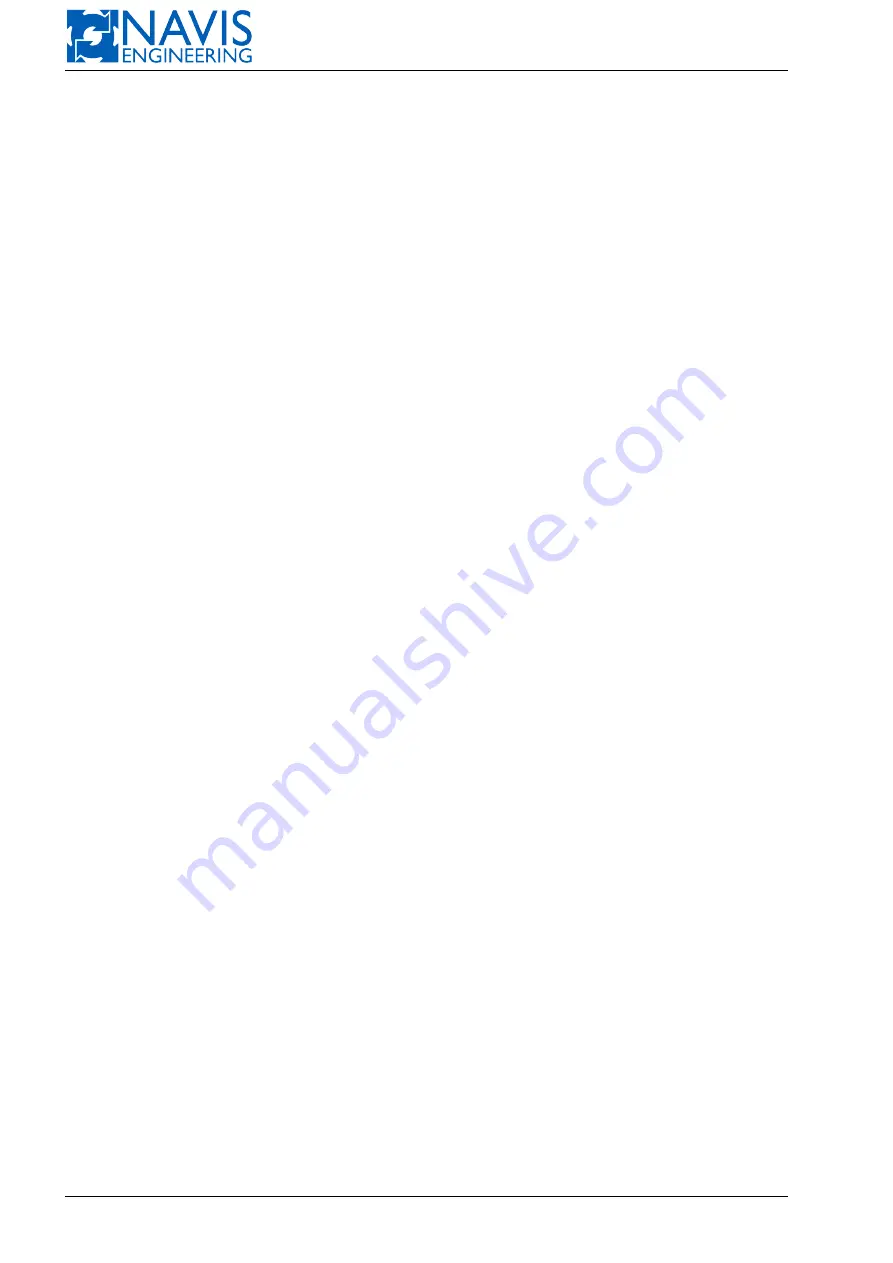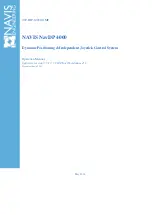
NAVIS NavDP 4000. Operation Manual
1.2.4
Vessel Model Update
The vessel model doesn’t provide an accurate description of the vessel dynamics. The wind and thruster forces, as well
as the hull hydrodynamics are simulated only approximately. As to the current speed and direction, they are not measured
but calculated. Finally, the DP control system doesn’t cancel out a high-frequency wave induced forces, because these
forces are greater than the thruster ones. Therefore, to use the position and heading determined values by controller the
data is filtered to exclude a wave induced component.
To update the model extended Kalman filter is used. The method provides the effective noise filtering of the position
and heading data. The vessel model update algorithm applies the measured data from reference systems and sensors and
the data predicted by the model to calculate a position and heading difference, which is applied to the model update.
The Kalman filter technique provides an optimal estimation of ship moving parameters and those of current. Moreover,
it provides so calling “dead reckoning” positioning (only for a short period of time) if there are no further model updates.
1.2.5
Operator Commands
The DP operator switches the system to the mode and input commands providing a required maneuver.
A rotary knob is used to generate the required moment.
A joystick is used either to generate a control force vector both the surge and sway directions or to set required vessel
speed (both the surge and sway directions). The thrusters provide the control force and speed.
To input data(position and heading setpoints, route parameters etc.) a touchscreen is applied.
1.2.6
Set Point Algorithm
The
NAVIS NavDP 4000
system provides the vessel moving according to the operators’ commands and selected
mode. The Set Point Algorithm transforms operator commands to detailed instructions to Optimal Controller. For in-
stance, the track following mode includes several tasks, such as:
– track specification
– obtaining s pecified track
– following a track leg
– following a new leg etc
Each task is described as a particular control problem, and is solved using a particular algorithm.
1.2.7
Optimal Controller
The Optimal Controller provides a vessel position and heading, as well as the vessel speed.The parameter values are
input by operator.
The controller produces a force required to move a vessel to a specified position or to steer course. The force is
proportional to an error of the vessel model position values.
The controller produces the force required to provide the given speed. The force is proportional to an error of the
vessel model speed value.
When solving this problem, the Optimal Controller accounts for the manual control forces (if any) and the feed forward
control loops (wind compensation)forces.
To cancel out unmodelled and unmeasured forces (current and mathematical model errors)an integral feedback loop
is used.
The thrusters provides resulting control forces along the both axis and the turning moment.
1.2.8
Sensors and Position References Systems Data Processing
The DP control system receives information from sensors and ref-systems.
DGPS furnish the DP control system the vessel position information, while gyrocompass conveys the vessel heading
data.
VRS transfers roll and pitch values.
Wind sensor measures the wind speed and direction.
The information from sensors is continuously processed for the purpose of detecting possible data errors. An operator
can assign sensors to be used, and estimate validity of obtained data.
13
Doc. 000.JDP-10000-OME, rev.3.3.13/“2102.$–17A-Advanced”





























